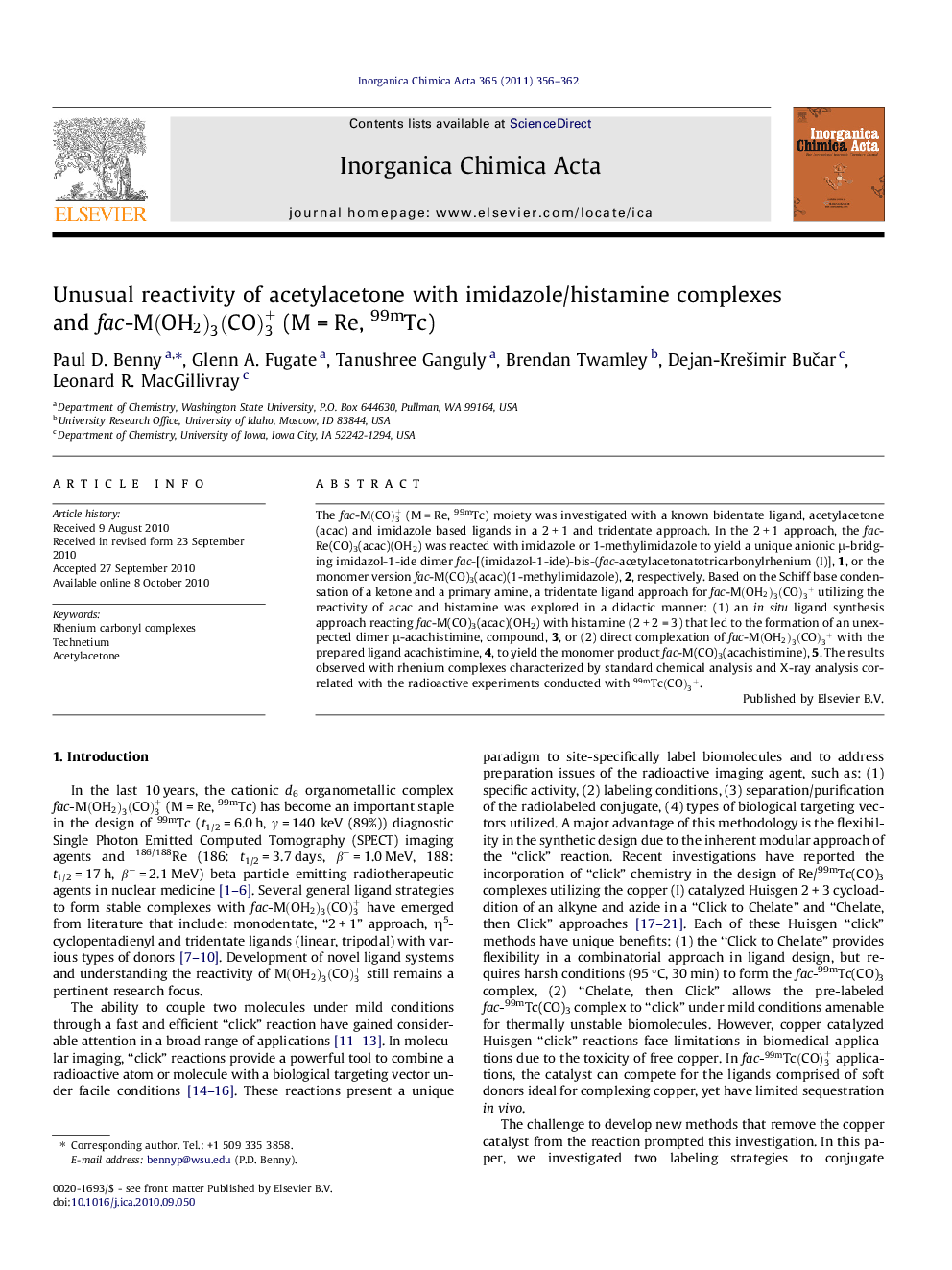| Article ID | Journal | Published Year | Pages | File Type |
|---|---|---|---|---|
| 1306568 | Inorganica Chimica Acta | 2011 | 7 Pages |
The fac-M(CO)3+ (M = Re, 99mTc) moiety was investigated with a known bidentate ligand, acetylacetone (acac) and imidazole based ligands in a 2 + 1 and tridentate approach. In the 2 + 1 approach, the fac-Re(CO)3(acac)(OH2) was reacted with imidazole or 1-methylimidazole to yield a unique anionic μ-bridging imidazol-1-ide dimer fac-[(imidazol-1-ide)-bis-(fac-acetylacetonatotricarbonylrhenium (I)], 1, or the monomer version fac-M(CO)3(acac)(1-methylimidazole), 2, respectively. Based on the Schiff base condensation of a ketone and a primary amine, a tridentate ligand approach for fac-M(OH2)3(CO)3+ utilizing the reactivity of acac and histamine was explored in a didactic manner: (1) an in situ ligand synthesis approach reacting fac-M(CO)3(acac)(OH2) with histamine (2 + 2 = 3) that led to the formation of an unexpected dimer μ-acachistimine, compound, 3, or (2) direct complexation of fac-M(OH2)3(CO)3+ with the prepared ligand acachistimine, 4, to yield the monomer product fac-M(CO)3(acachistimine), 5. The results observed with rhenium complexes characterized by standard chemical analysis and X-ray analysis correlated with the radioactive experiments conducted with 99mTc(CO)3+.
Graphical abstractThe fac-M(CO)3+ (M = Re, 99mTc) moiety was investigated with a known bidentate ligand, acetylacetone (acac) to generate fac-Re(CO)3(acac)(OH2) followed by the introduction of imidazole based ligands in a 2 + 1 and tridentate approach. Depending on the ligand and reaction conditions, monomer and dimer complexes were isolated.Figure optionsDownload full-size imageDownload as PowerPoint slide
